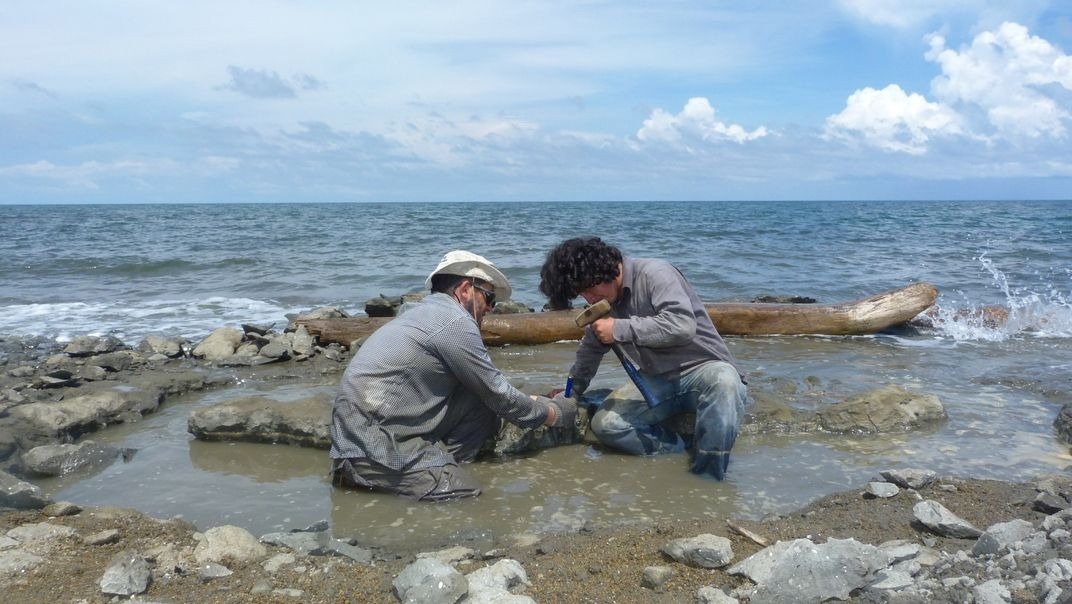There are now just seven different species of sea turtles. They include the olive ridley and the Kemp's ridley, both members of the genus Lepidochelys. Even though these sea turtles are among the most frequent in the Caribbean Sea and other parts of the world, nothing is known about their origins or evolution. The earliest fossil evidence of these turtles has just been discovered—turtle shell fragments—on Panama’s Caribbean coast.
 Fossil remains of a turtle shell from 6 million years ago were found in Piña Beach, on the Caribbean coast of Panama. Image Credit: Carlos De Gracia, University of Vienna and STRI
Fossil remains of a turtle shell from 6 million years ago were found in Piña Beach, on the Caribbean coast of Panama. Image Credit: Carlos De Gracia, University of Vienna and STRI
According to the fossil found in the Chagres Formation, this turtle existed in Panama some 6 million years ago during the upper Miocene Epoch. At the time, the planet was becoming drier and colder, with ice forming at the poles, sea levels dropping, and rainfall decreasing.
The fossils were examined by a team of paleontologists led by Dr. Edwin Cadena of the Universidad del Rosario in Bogotá, Colombia, a research associate at the Smithsonian Tropical Research Institute in Panama.
In addition to discovering the earliest record of Lepidochelys turtles, the researchers uncovered something unexpected in the turtle's fossil bones: DNA evidence. They employed a solution called DAPI to test for the presence of genetic material after discovering preserved bone cells (osteocytes) with nucleus-like features.
Within the entire vertebrate fossil record on the planet, this had only been previously reported in two dinosaur fossils, including one of Tyrannosaurus rex.”
Dr. Edwin Cadena, Research Associate, Smithsonian Tropical Research Institute
This discovery highlights the importance of fossil vertebrates preserved on Panama’s Caribbean coast not only for understanding biodiversity at the time of the emergence of the Panama Isthmus, which separated the Caribbean from the Pacific and connected North and South America, but also for comprehending the preservation of soft tissues and possible original living matter such as proteins and DNA, which are essential components of an emerging field known as Molecular Paleontology.
The Caribbean fossils from Panama that we have managed to rescue over the years are helping to rewrite the history of marine vertebrates of the Isthmus.”
Carlos De Gracia, Study Co-Author and Doctoral Fellow, STRI
Source:
Journal reference:
Cadena, E.-A., et al. (2023). An Upper Miocene marine turtle from panama that preserves osteocytes with potential DNA. Journal of Vertebrate Paleontology. doi.org/10.1080/02724634.2023.2254356